http://www.bjp-online.com/2016/10/a-matter-of-memory-photography-as-object-in-the-digital-age/
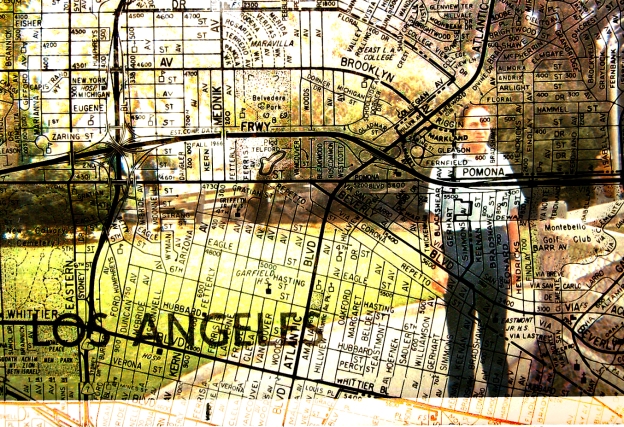
There are three photographs in The Photo Fostering Project’s archive that I return to quite often. This is partly because they are some of the first found photographs I ever collected, and also because of what they depict.
At first I found the photographs unusual, the male subject displays a sense of awkwardness as he poses for the camera, seemingly not really knowing what to do with his arms. It is like he has suddenly become very conscious of himself and his body. This awkwardness is given some order by the photographer’s composition within the frame. The order and awkwardness are simultaneous in these frames, neither one overcoming the other. A feature we often come across when viewing vernacular photography, awkwardness and the battle of composition.

The only information scribbled onto the reverse side of one of these photographs is ‘Santa Monica’. We don’t know the man’s name, how old he is, where he is originally from. Was this a holiday or a day trip? Did they live in Santa Monica or are they tourists? We also, like in so many other circumstances, do not know who the photographer was. It could be the man’s wife, friend, son or daughter. We can recognise the famous Griffith Observatory in one of the Photographs. This gives us another fragment of the puzzle in which we can speculate further. The thing that we know to be true, is that this man, at this point in time, existed.
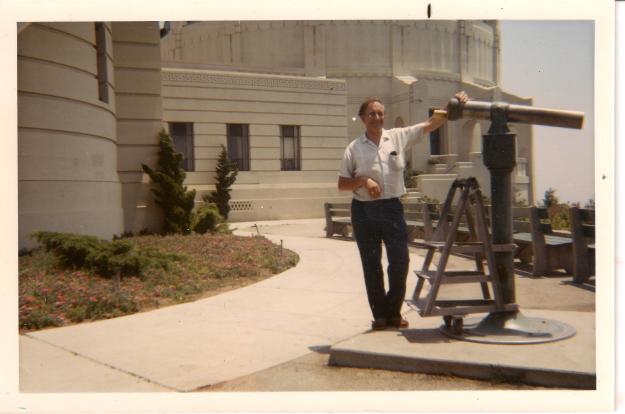
As I look at these photographs, I wonder why they appeal to me so much. Is it the blue of the Californian sky and the nostalgic shades of colour? Is it that they suggest a slice of narrative when viewed together? They beg me to fill in the story. I wonder about the man in Los Angeles.
The most interesting found photographs are the photographs that offer the most questions and fall short of providing many answers. It gives us the opportunity to project our own conclusions and resolutions about the events depicted. I find that with these specific photographs, the man in Los Angeles reminds me of my own Grandfather. My Grandfather wasn’t photographed very much as he would often shy away from the camera. I know of one photograph of him. He has since left this world and this photograph is to my knowledge, what remains of his image. Therefore, the photographs of the man in Los Angeles have given me something to remember my Grandfather by. I imagine that this is how he would have stood in front of the camera, just like the man in Los Angeles.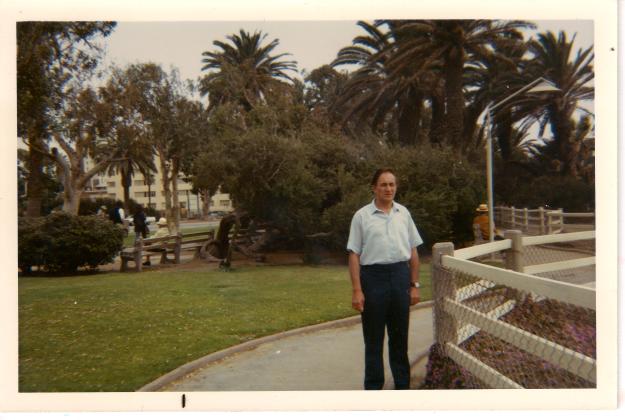
Mortality is a frequent thought of mine when viewing vernacular photography. Simply because a lot of what you are looking at has often been and gone by the time you have viewed the photograph. However, the concept of time can be warped with the photograph. The man in Los Angeles may be gone, but he will also still be standing outside the Griffith Observatory until he no longer does.
Ever since embarking on the project ‘Back to Betws’ with my father, I have had a growing affinity with the charm of North Wales. With Snowdonia being a favourite destination of mine, I thought it was about time to try some landscape photography. I have obviously been inspired by North Wales’ enticing landscape and picturesque viewpoints, but what has also inspired me is the history of their depiction.

Richard Wilson – Llyn-y-cau, Cader Idris
Towards the end of the 18th century, North Wales became a popular destination for artists. Landscape painters in particular would travel there and stay within the small towns and villages, local to some of the most breath-taking spots. They would paint and sketch the beautiful scenery that they found and it provided some artists with the their most famous works. Richard Wilson being one. A welshman himself, produced some of his most famous works depicting the Welsh landscape. He is considered a pioneer of British landscape painting and one of the most famous painters Wales has ever produced. Notably, both John Constable and JMW Turner list his work as a considerable influence.
Taking this into consideration, I wanted to almost explore North Wales as many artists had before me. Walking, hiking and travelling with an eye for the image. I don’t or didn’t want to set out to re-trace anyone’s footsteps just yet, I simply wanted to experience and capture some of that welsh landscape. It is also my time taking my Mamiya RB67 medium format camera with the intention to make landscape photographs. Something I really want to practice and develop my skills in, but also explore the possibilities and limitations.
 So after my Mom was back at home and settled after her operation, I decided to go ahead with my Wales trip. I packed up the car and headed out on the A5 from the Midlands. The straight roman road that leads you into Telford, and then cascades you into the gradual scenery change of North Wales.
So after my Mom was back at home and settled after her operation, I decided to go ahead with my Wales trip. I packed up the car and headed out on the A5 from the Midlands. The straight roman road that leads you into Telford, and then cascades you into the gradual scenery change of North Wales.  I headed straight for Llanberis to a campsite I am familiar with. www.campinginllanberis.com/ Llwyn Celyn Bach. A really nice campsite, it is on a steep gradient but once you get to the camping grounds it flattens out. It is in an excellent location to use as your base for climbing Snowdon, but could be considered hard to find from the Llanberis centre itself. It’s one of the cheapest campsites I have come across as a lone traveller. They charged me £6 for one night and they are family friendly and dog friendly. You do have to bear in mind that it is a fully operational farm so there will be ‘farm noise’ from machines and animals alike. The toilet facilities are good, however the toilet block on the top field is in need of some attention.
I headed straight for Llanberis to a campsite I am familiar with. www.campinginllanberis.com/ Llwyn Celyn Bach. A really nice campsite, it is on a steep gradient but once you get to the camping grounds it flattens out. It is in an excellent location to use as your base for climbing Snowdon, but could be considered hard to find from the Llanberis centre itself. It’s one of the cheapest campsites I have come across as a lone traveller. They charged me £6 for one night and they are family friendly and dog friendly. You do have to bear in mind that it is a fully operational farm so there will be ‘farm noise’ from machines and animals alike. The toilet facilities are good, however the toilet block on the top field is in need of some attention.
 So I pitched up and camped for the night before I awoke at 4.30am for dawn. I wanted to get some shots at first light and get most of my shooting done before the majority of people were awake and around the local trails and areas. I drove up to the top of Llanberis pass where the light was just breaking over the side of the mountain. I stopped to take a couple of shots here before moving on. The cloud was quite thick so the light was very evenly spread out across the land. This also meant that there was a significant difference between the correct exposure of the clouds and the correct exposure of the land. I tried my best to map the scenes with my light metre and try to reach a happy medium between the two. The one thing I enjoy about film is that it makes you work this way. It demands that the scene has to be considered in detail before you take the shot. The time and effort that gets put into this process makes me feel like I’m making an investment. Just like the landscape painters must have done. Spending hours and hours crafting their landscape paintings. It lets me feel as if I’m acknowledging that with my process, that i’m giving an element of respect to the medium and the landscape.
So I pitched up and camped for the night before I awoke at 4.30am for dawn. I wanted to get some shots at first light and get most of my shooting done before the majority of people were awake and around the local trails and areas. I drove up to the top of Llanberis pass where the light was just breaking over the side of the mountain. I stopped to take a couple of shots here before moving on. The cloud was quite thick so the light was very evenly spread out across the land. This also meant that there was a significant difference between the correct exposure of the clouds and the correct exposure of the land. I tried my best to map the scenes with my light metre and try to reach a happy medium between the two. The one thing I enjoy about film is that it makes you work this way. It demands that the scene has to be considered in detail before you take the shot. The time and effort that gets put into this process makes me feel like I’m making an investment. Just like the landscape painters must have done. Spending hours and hours crafting their landscape paintings. It lets me feel as if I’m acknowledging that with my process, that i’m giving an element of respect to the medium and the landscape.

From Llanberis pass
After my exploration around Llanberis pass and the local area, I went back to camp for some breakfast. I cooked up some porridge in my camp stove and began to make some decisions for the day.  Over the past few months I have been suffering with a knee problem that has been preventing me from doing any major hiking or anything too physical. This means that I really needed to take into account what locations I could get to. My knee felt good on this morning so I decided to head down to Cader Idris in the south of Snowdonia. My intention was to hike a little bit of the surrounding area. I drove to Cader Idris while stopping off at various points to take photographs. One thing that is fantastic about Snowdonia is that there is never a boring road to drive on, and I really enjoyed rolling through the hills and slate covered mountains to Cader Idris. When I arrived my knee was feeling tight. I made the decision not to hike Cader Idris in fear of damaging my knee even more. At this point I felt quite disappointed and made a vow to myself to get my knee treated as soon as I returned home.
Over the past few months I have been suffering with a knee problem that has been preventing me from doing any major hiking or anything too physical. This means that I really needed to take into account what locations I could get to. My knee felt good on this morning so I decided to head down to Cader Idris in the south of Snowdonia. My intention was to hike a little bit of the surrounding area. I drove to Cader Idris while stopping off at various points to take photographs. One thing that is fantastic about Snowdonia is that there is never a boring road to drive on, and I really enjoyed rolling through the hills and slate covered mountains to Cader Idris. When I arrived my knee was feeling tight. I made the decision not to hike Cader Idris in fear of damaging my knee even more. At this point I felt quite disappointed and made a vow to myself to get my knee treated as soon as I returned home.
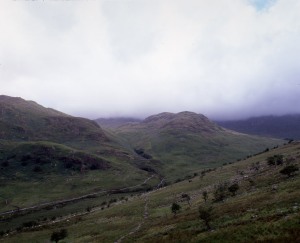
View towards Pen-y-pass
I continued to explore Snowdonia by car and found myself a campsite. I continued to take photographs until the next day when I started the journey home. It had been a stressful week and my knee had really limited my capabilities of getting certain shots that I had wanted. I drove down through the middle of Wales and noted down places to come back to visit and Photograph. I headed through the Brecon Beacons and towards Cardiff where I joined the M4 and slowly merged back through the infrastructure and filtered into and through the ever expanding cities. I stopped at a service station where the queue for McDonalds looked like the front of a crowd at a concert.

I look forward to returning to North Wales and Snowdonia. My next goal is to return back to Cader Idris and visit the viewpoint from where Richard Wilson made the painting that is at the top of this blog post (Llyn-y-cau, Cader Idris).
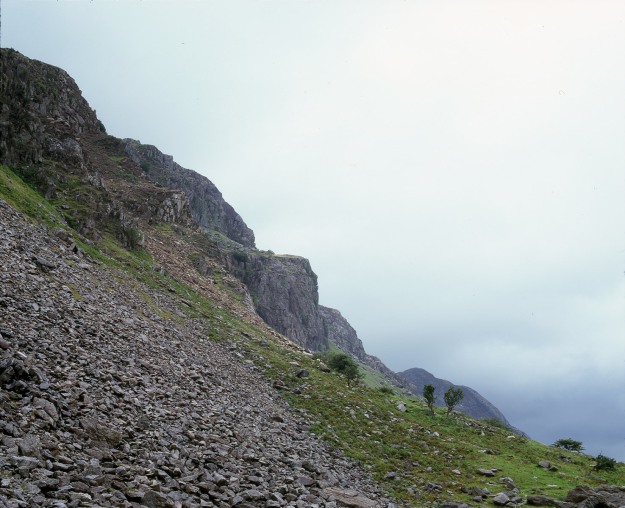
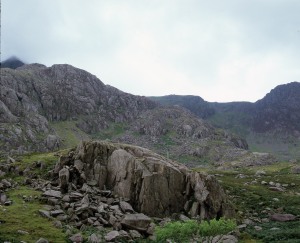
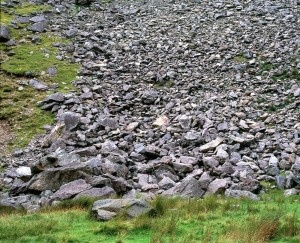
To carry on the theme of what I recently wrote about in some thoughts on iphoneography and smartphone photography, this article by Mason Adams provides an excellent, more in depth look into how we use Photography today.
Following on from my summer update, I mentioned that my plans were changed due to my Mother being taken into hospital. I was driving up to the Midlands when I received the phone call. My original intention was to spend a week or so travelling around North Wales, I gave myself two days to get there as I wanted to give myself a little bit of time to see the family. So when I received the call, I was already travelling up to stay with my Dad for a night or two. I think i’m a bit late coming to this hands-free telecommunications revolution, but when I am driving now, especially on longer distances, I make sure to have my headphones connected so I can make and take any calls I get. I answered the call and my Dad was on the other end. He said that my Mom’s abdominal pain had got worse and she had gone to A&E. They had then sent her up to a ward to have some tests. We ended the call after I had decided to drive straight to the hospital. At this point it had started to rain and the light was fading on the M25. The street lights had come on and the spray from the road was hitting the windscreen wipers as I turned them to the more powerful setting. The rest of the drive went surprisingly quickly considering I was recycling thoughts and concerns about my Mom, dwelling and stressing as we do on details and scenarios.
 I arrived at the hospital and it was mostly deserted. The rain was now illuminated by each streetlight and the floodlit car park gave you the opportunity to really see how much water was being thrown from the sky. I was genuinely surprised at the lack of activity around the hospital, I probably saw around one cleaner and two nurses on my navigation around the corridors, searching for ward 17. It did all feel like the beginning of a film, the extreme weather and the empty hospital really set a sombre and sobering mood as I tried to find my Mom.
I arrived at the hospital and it was mostly deserted. The rain was now illuminated by each streetlight and the floodlit car park gave you the opportunity to really see how much water was being thrown from the sky. I was genuinely surprised at the lack of activity around the hospital, I probably saw around one cleaner and two nurses on my navigation around the corridors, searching for ward 17. It did all feel like the beginning of a film, the extreme weather and the empty hospital really set a sombre and sobering mood as I tried to find my Mom.
 I did find Ward 17 within the corridor maze after I found a discreet staircase next to a vending machine. I then found my Mom and proceeded to find out what was going on. My Dad had made the trip from his flat via the train, we went to get a coffee as the nurse and doctor came to inspect my Mother’s pain. It was at this point where I thought that I needed to document this moment, I needed a camera. Everything had come together, the mood set by the weather outside, the empty hospital and the uncertainty of knowing what was wrong. It had all come together to set a scene.
I did find Ward 17 within the corridor maze after I found a discreet staircase next to a vending machine. I then found my Mom and proceeded to find out what was going on. My Dad had made the trip from his flat via the train, we went to get a coffee as the nurse and doctor came to inspect my Mother’s pain. It was at this point where I thought that I needed to document this moment, I needed a camera. Everything had come together, the mood set by the weather outside, the empty hospital and the uncertainty of knowing what was wrong. It had all come together to set a scene.
Now, when we photograph our families, we tend to only photograph the good times, the celebrations and the birthdays. I think it’s also important to photograph your family at their most vulnerable. I think we can too easily create a propaganda of our past if we only f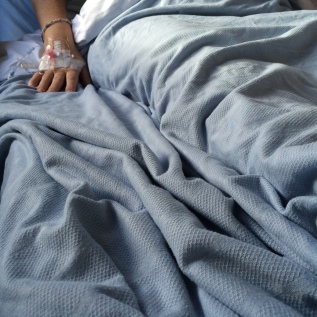 ocus on the good times and edit out and discard events that have actually made you more of a family. It’s good to document the things you have overcome. Anyway, I didn’t have my camera! It was in the car and packed away. The only camera I had was the one on my phone. My iPhone. So I continued to pull it out from the pocket of my jeans, and I started to make some images to try and document this event.
ocus on the good times and edit out and discard events that have actually made you more of a family. It’s good to document the things you have overcome. Anyway, I didn’t have my camera! It was in the car and packed away. The only camera I had was the one on my phone. My iPhone. So I continued to pull it out from the pocket of my jeans, and I started to make some images to try and document this event.
This got me thinking. The iPhone or any smart phone as a primary camera is not a new thing. iPhoneography as an example is a term used for photography using the iPhone device. Images made by the iPhone have even made it onto the front covers of newspapers
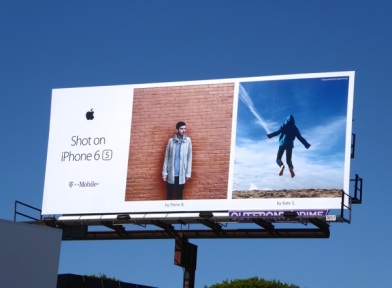 and more recently have been the focal point of Apple’s iPhone advertising campaign ‘Shot on iPhone’. This campaign tries to impress and surprise the consumer through the quality of their selected photos. Images have even been printed onto large billboards to show their adaptability and potential. The aim seems to be that the consumer needs to consider getting an iPhone because of the great images they could take. Apple seem to be trying to market the iPhone as a rival or as competition to the digital point and shoot cameras, arguably the iPhone could be considered competition to entry level DSLRs. But what I noticed was, is that I am beginning more and more to use my smartphone as a documentary tool. In my day to day life, my camera phone is coming out of my pocket more and more in order to photograph. The iPhone, and in this particular circumstance at the hospital, was probably the best tool for documenting this event though images.
and more recently have been the focal point of Apple’s iPhone advertising campaign ‘Shot on iPhone’. This campaign tries to impress and surprise the consumer through the quality of their selected photos. Images have even been printed onto large billboards to show their adaptability and potential. The aim seems to be that the consumer needs to consider getting an iPhone because of the great images they could take. Apple seem to be trying to market the iPhone as a rival or as competition to the digital point and shoot cameras, arguably the iPhone could be considered competition to entry level DSLRs. But what I noticed was, is that I am beginning more and more to use my smartphone as a documentary tool. In my day to day life, my camera phone is coming out of my pocket more and more in order to photograph. The iPhone, and in this particular circumstance at the hospital, was probably the best tool for documenting this event though images.
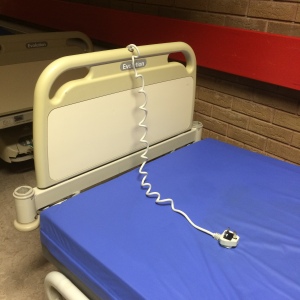 Inside the hospital, If I was to bring in my big camera and start shooting away, it’s hardly discreet. It violates all kinds of patient privileges, especially when you are not the only patient in a ward. However, the iPhone is perfectly discreet, it can be silent and it can also be disguised because it IS a phone. No one can really know when and if you are taking a photograph, but also it made me feel a lot more comfortable in taking photographs. I didn’t feel as if I was impeaching on anyones privacy when they are at their most vulnerable. iPhones and smartphones seem to be steadily establishing themselves more and more as general first choice cameras. A part of that of course is that they are always with us as they fill a variety of different purposes, but they are getting to a point where the images they produce can hold their own in terms of quality. Of
Inside the hospital, If I was to bring in my big camera and start shooting away, it’s hardly discreet. It violates all kinds of patient privileges, especially when you are not the only patient in a ward. However, the iPhone is perfectly discreet, it can be silent and it can also be disguised because it IS a phone. No one can really know when and if you are taking a photograph, but also it made me feel a lot more comfortable in taking photographs. I didn’t feel as if I was impeaching on anyones privacy when they are at their most vulnerable. iPhones and smartphones seem to be steadily establishing themselves more and more as general first choice cameras. A part of that of course is that they are always with us as they fill a variety of different purposes, but they are getting to a point where the images they produce can hold their own in terms of quality. Of  course they are never going to be a match for a fully framed censored shot or a large format negative, but neither is or was a 35mm disposable camera. A camera that was suited to document many an occasion in the past.
course they are never going to be a match for a fully framed censored shot or a large format negative, but neither is or was a 35mm disposable camera. A camera that was suited to document many an occasion in the past.
My projection is that we will start to see the iPhone and smart phone photography integrate itself more and more into the photographic world and the photographic art word. A most recent example I can think of is Julian Calverley’s book #iPhoneOnly. It has a great foreword by Wayne Ford on the website and there is also an ibook version. I think this is a great thing too, if images from the iPhone or smart phone become more and more accepted by the photographic communities, then more and more people will be enabled to make photographic work and tell their own stories from their own perspectives. The smartphone image really lends itself to visual note taking or the undertaking of a visual diary, and we must not forget that smartphone capabilities mean that this can also be done live. It can be posted and archived straight away for instant sharing and documenting. I hope to share more of my ideas on this in the future and also on some of the platforms we use like Instagram and Facebook etc.
During my Mom’s hospital stay I documented it through variety of photographs, some of which I have shared here. She was diagnosed with a gall bladder infection and they removed it quite quickly. She was out of hospital within a week which was a relief to us all. When she had settled back at home I continued to undertake my trip to North Wales…
Sean
It’s been quite a busy 6 weeks of summer this year. I had planned many photography trips and the majority of them were carried out successfully. However, the unforeseeable events that interrupt your plans in life did make an appearance. This meant that I didn’t get as much done as I had wanted to, but most mini-adventures did go to plan. I do plan to write about these individually and share the photographs from these trips in more detail, but at the moment I just wanted to provide an overview.
At the start of the summer break I visited my family. This actually coincided with quite an important date as it was the 20th year anniversary since my Father’s brain haemorrhage. A subject/project which I have photographed previously in my personal work. It was therefore important for me to take my camera and make sure I photographed something on this day.
I had then planned to take an extended trip to North Wales. My in tention was to camp and travel around Snowdonia and explore and practice with some landscape photography. I wanted to experiment with some different film types as well as testing out different pack weights. I wanted to do some hiking and test out different combinations of gear and how much weight would be comfortable to carry. However, as I departed for my trip I was informed that my Mom had been taken into hospital. She was to have her gall bladder removed, so I spent a week at the hospital and with family instead. After the operation and once my Mom had been discharged, I managed to continue my Wales trip but just a shorter version of it
tention was to camp and travel around Snowdonia and explore and practice with some landscape photography. I wanted to experiment with some different film types as well as testing out different pack weights. I wanted to do some hiking and test out different combinations of gear and how much weight would be comfortable to carry. However, as I departed for my trip I was informed that my Mom had been taken into hospital. She was to have her gall bladder removed, so I spent a week at the hospital and with family instead. After the operation and once my Mom had been discharged, I managed to continue my Wales trip but just a shorter version of it .
.
< Early morning bed head, camping in Llanberis
In August I then flew out to Poland with Maggie. We had planned to spend 2 weeks with her family and then attend a friends wedding in the middle of the trip. We were fortunate enough to borrow a car and this gave me a perfect opportunity to start a project i’ve had in mind since my first visit to Poland.
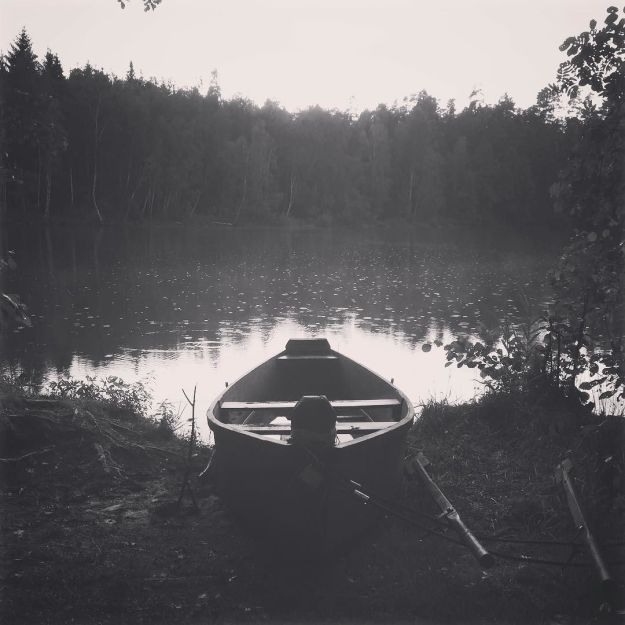
We visited the Masurian Lake District and travelled around the local villages. A lot of time was also spent with Maggie educating me in the art of mushroom picking, something which i’m not sure I enjoy just yet, I think I need more practice. However the wild mushrooms of Poland do taste great and I was informed that this year has been a very good year for mushrooms! I will be sure to post more on my time in Poland soon and introduce the project I started shooting while I was out there.
Anyway, now that I am back, I have one batch of film that is in the process of being scanned. I have the other batch of film waiting to be sent off for development. I will be sure to start sharing my images as soon as possible.
Sean
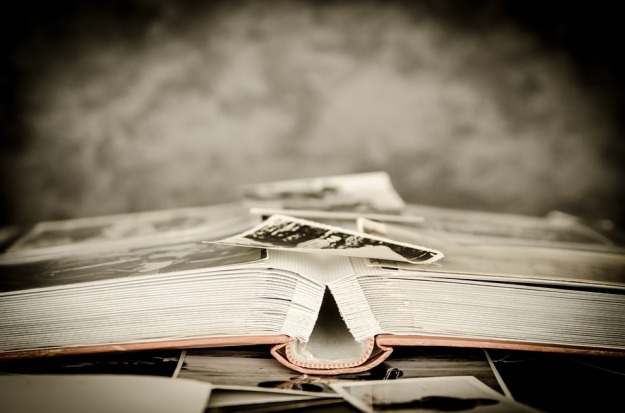
The family photo album was an appropriate medium for a not so distant past. The purpose was to store and present the special occasions captured on whatever affordable camera the family had. Tactile prints in a tangible artifact. Kodak moments were accessible to the majority; families bought into the idea that the camera could better capture their memories. The photograph would provide a piece of evidence that would be more reliable, a precise moment in time captured in one frame. A trustworthy representation. A reflection on the real world, our world, our family. The Photograph was considered a better alternative than one’s own capabilities in exercising memory, where details can become distorted and faded over time. Where some events take precedent over others, given their importance at the time of recall. The Photograph wouldn’t lie, the photograph was truth.
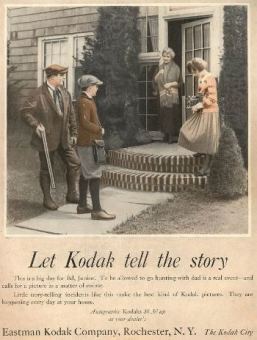 It’s not only our relationship with Photography that has changed but it’s our relationship with media. We are instant, on demand, fiber-optic consumers of the media that we choose. We want our content quick and current and we like the content that we publish ourselves, to be instantly gratified within the currency of likes and shares. The digital age or (post-digital if you will), is a fluid environment of news feeds, streams and timelines. Now this is a rich and endless world of opportunity, collaboration and ideas, people collectively can form opinions and responses through web based communications, and those people can be anywhere in the world (providing they have an internet connection of course). But within this world has come new ideas of responsibilities, language and fluency. There are jobs available now that were never conceived of 20 years ago, and there will be jobs 20 years from now that we can’t conceive presently. The digital age is established and flourishing, it will continue to grow and evolve as more and more parts of our lives become digitized, in order for efficiency, convenience or just because it can be done. In the words of George Mallory in answer to the question, ‘Why do you want to climb Mount Everest?’ ‘Because it’s there.’
It’s not only our relationship with Photography that has changed but it’s our relationship with media. We are instant, on demand, fiber-optic consumers of the media that we choose. We want our content quick and current and we like the content that we publish ourselves, to be instantly gratified within the currency of likes and shares. The digital age or (post-digital if you will), is a fluid environment of news feeds, streams and timelines. Now this is a rich and endless world of opportunity, collaboration and ideas, people collectively can form opinions and responses through web based communications, and those people can be anywhere in the world (providing they have an internet connection of course). But within this world has come new ideas of responsibilities, language and fluency. There are jobs available now that were never conceived of 20 years ago, and there will be jobs 20 years from now that we can’t conceive presently. The digital age is established and flourishing, it will continue to grow and evolve as more and more parts of our lives become digitized, in order for efficiency, convenience or just because it can be done. In the words of George Mallory in answer to the question, ‘Why do you want to climb Mount Everest?’ ‘Because it’s there.’
Just because we can.
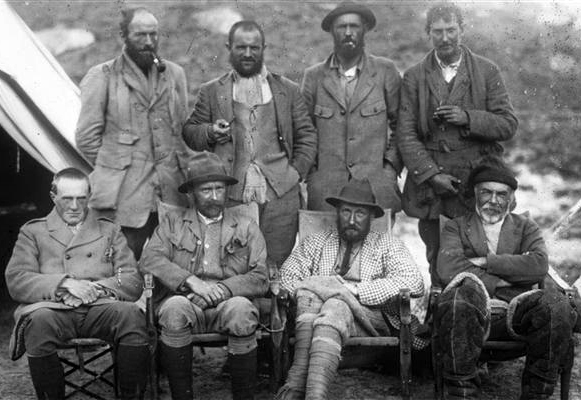
Let’s think of digital photography as a different medium to analog photography, much like painting is a different medium to sculpture. Digital photography is more suited to being duplicated and shared than its counterpart of analog photography. That combined with a camera being built into every smartphone and tablet see us taking more photographs than ever before. Add on an Internet connection and that see’s us sharing more images than we ever have before. We now take more photographs every two minutes than that were taken in the whole of the 19th century. The combination of camera accessibility and Wi-Fi has seen photography being used more frequently and for a wider range of purposes. However most images taken can still be broken down into fulfilling the purpose of documenting something. We are saying ‘I was here, I did this, I exist.’ The present tense of ‘I exist’ is important here, as with analog photography, as mentioned earlier, it was about taking a photograph to capture a memory, it was something mnemonic. We said ‘I was here, I did this, I existed.’ The difference is that the digital age has given the photograph a value in the present. Whether you’re taking a selfie outside Buckingham palace ready for Facebook or you’re instagramming your Nando’s before you eat it, the resulting photographs are about the present and for the present. They are here today and gone tomorrow as the saying goes. They are in the news feed. Some apps and social media platforms create an archive of these images you’ve shared, but seldom do we re-visit them and even more rarely print them. Apps like Snapchat are built solely on the purpose of media being fluid. It doesn’t even store the images (however I think now there is an option to do this). The point being is that the digital image and our relationship with the photograph has evolved and changed with evolving technologies. The Photograph now has more possibilities than ever. It can be everything and nothing.
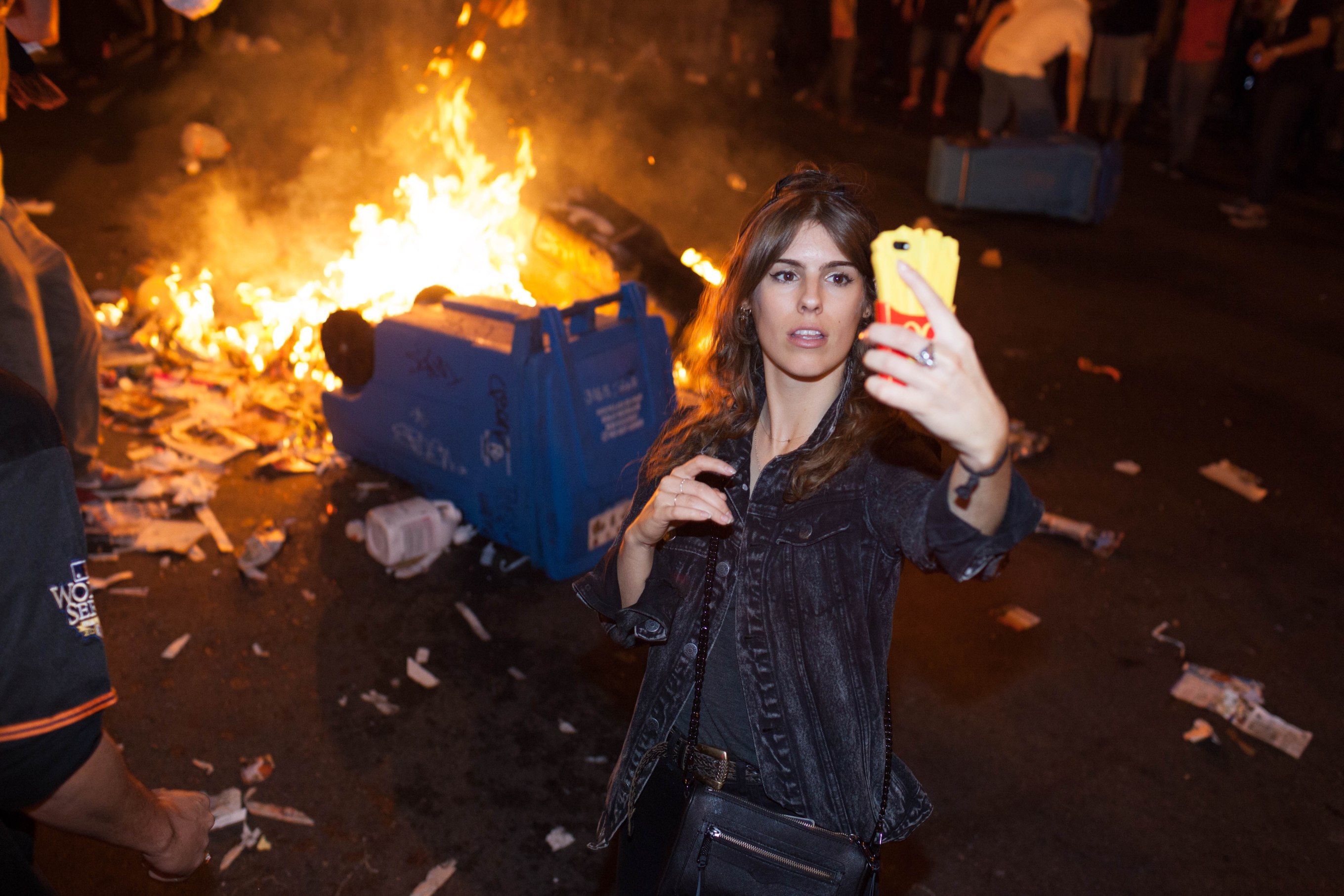
Not only has our relationship with photography changed but also has our subject matter. We are no longer negotiated by a set number of shots on a roll of film, there is the potential to take as many photos as you want, which judging by the estimate of one trillion photographs taken in 2015 alone, seems to be true. The camera can now be used to extensively accommodate our own narcissism. The photographs we produce are used to communicate with each other, a picture is faster to take and upload, than fitting everything you want to say into 140 characters, or constructing the perfect status update. One thing has stayed the same however; we are still using the camera to document ourselves, our lives and the lives of those around us. We still deem it to be a successful tool in carrying out this task. Like what was mentioned before, we can and do carry this out extensively these days, sometimes almost living and validating our lives through virtual interactions. However, back before digital, wasn’t the family album a form of validation? Didn’t the family album help us construct an idea of our place in the world, or at least help us on our way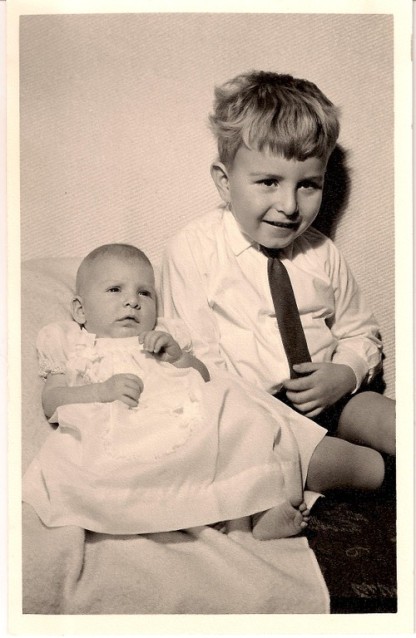
The family album isn’t dead, there hasn’t been a death of the family album, it’s more like an evolution. The family album has evolved as our relationship with photography has. The family album’s characteristics have been taken and carried on into the digital world. The nostalgia we have for the tactile image and the past has been digitally re-created through retro filters and retro themes. Combining our familiarities of the past with the present helps us go forward to the future. More people are starting to print their images because they are identifying a problem with the digital image. There is no touch or feel, smell or texture. The digital image has it’s own limitations, and the images we collect are so rarely printed. The hard drive and cloud storage is as safe as a box of prints next to a fire. People have lost megabytes and gigabytes worth of images to hard drive corruption, viruses, hacks etc. The digital image can be destroyed. You need to back up your images at least twice to have piece of mind. It is important to think about printed copies, a hard copy, just as a reassurance if anything. But then again you wouldn’t want to print every single image you take these days, even though it would be pretty impossible to do so (a trillion 6×4 prints would reach from here to the sun and back again). In the amount of images we take today, there are only going to be a few we would treasure, or very few that would be mnemonic to us. A memory we wish to keep or be reminded of. It’s almost like an editing process; we now have more power in the choice of images we keep. We have more freedom over the construction of our past. The family album itself in design and as a physical thing is what is becoming scarce. That is not to say it is dead or will cease to exist in the future. It’s just a rarity. With increased rarity comes increased value; it’s a medium that is becoming more special, a medium with more provenance. It is a medium used as a gift. I observed a student recently making a handmade photo album as a special gift for someone. There was something special or different about these photographs not being on a screen, by printing these images and placing them in an album, they gained something. They were honored as photographs as well as artifacts. They became so much more by being brought into the physical world. They were placed in a private place with the idea of forever.
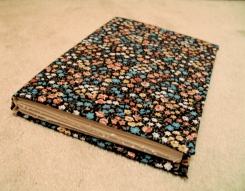
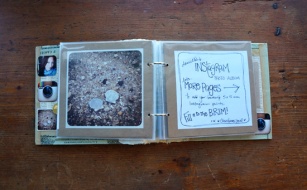
The world we live in today, if anything has shown us the importance of the things that came before. The family album, the tactile print or film photography aren’t dead, if anything they’ve been enhanced in both meaning and experience. Their charm and physicalities are amplified in the digital world, and your hearing becomes more sensitive when you cover your eyes.
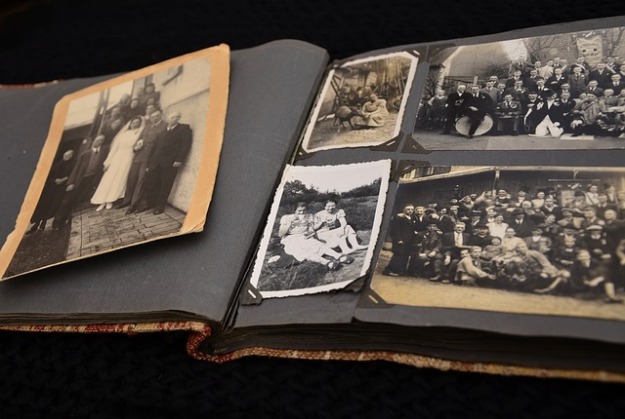
So this is my first post on my new blog! I hope it is the first of many more!
I intend for this blog to be place for me to share my ideas and thoughts on photography, as well as sharing the processes of my own photography. I hope to treat this blog almost as an online sketchbook or even a diary. I hope to write and talk about photography and let it open up further discussions in other passions of mine. I also hope that it can be informative to anybody that stumbles across it.
So here it goes!
